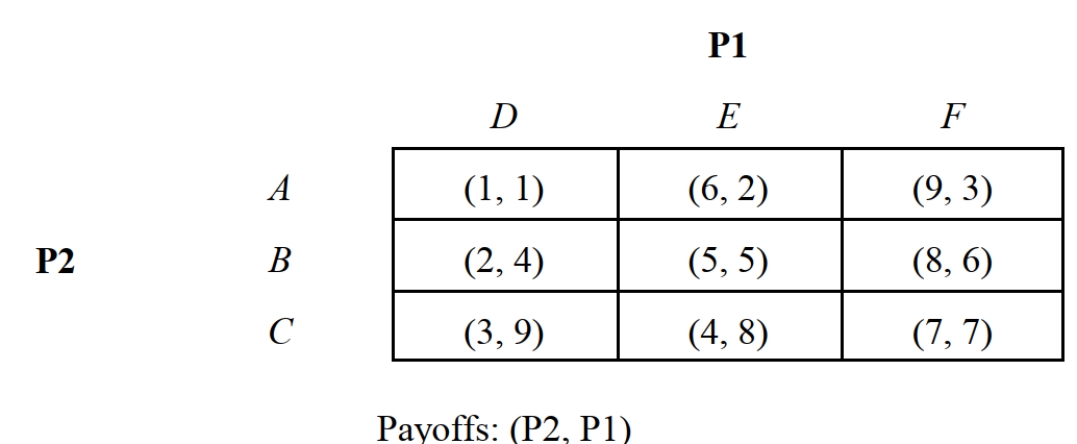Multiple Choice

-Suppose that the game depicted in Figure 11.6 is modeled as a sequential move game in which P1 moves first and the payoffs are (P2, P1) . The subgame perfect equilibrium for this game is:
A) {F ? A}.
B) {D ? B}.
C) {D ? C}.
D) {E ? C}.
E) {F ? C}.
Correct Answer:

Verified
Correct Answer:
Verified
Q11: In multistage games, every decision node is:<br>A)
Q12: <img src="https://d2lvgg3v3hfg70.cloudfront.net/TBR1330/.jpg" alt=" -Suppose that the
Q13: <img src="https://d2lvgg3v3hfg70.cloudfront.net/TBR1330/.jpg" alt=" -Consider game depicted
Q14: <img src="https://d2lvgg3v3hfg70.cloudfront.net/TBR1330/.jpg" alt=" -Consider the game
Q15: A subgame-perfect equilibrium:<br>A) Is a Nash equilibrium
Q17: <img src="https://d2lvgg3v3hfg70.cloudfront.net/TBR1330/.jpg" alt=" -Consider the game
Q18: <img src="https://d2lvgg3v3hfg70.cloudfront.net/TBR1330/.jpg" alt=" -Consider the game
Q19: <img src="https://d2lvgg3v3hfg70.cloudfront.net/TBR1330/.jpg" alt=" -Consider the game
Q20: If both firms in a duopolistic industry
Q21: A decision node:<br>A) May be the root